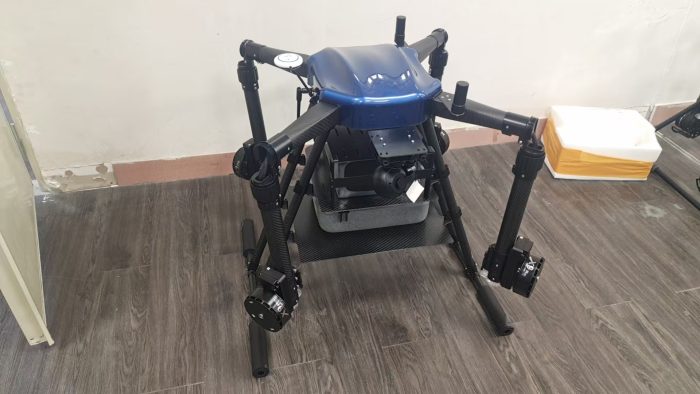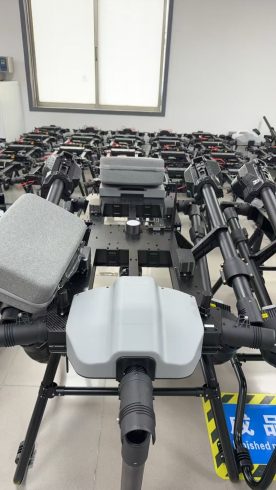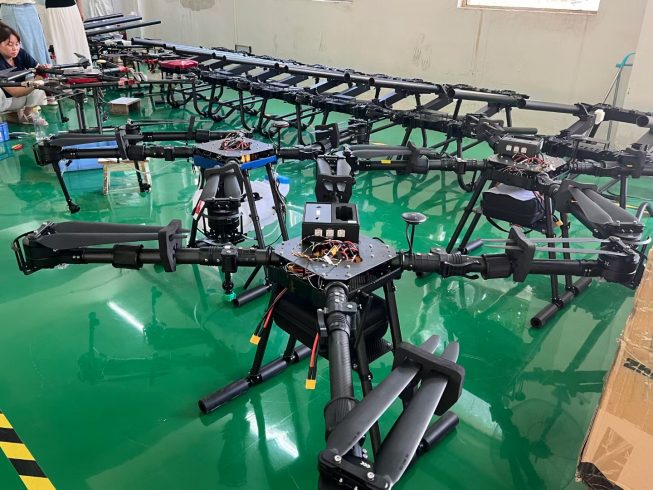In the heart of Iowa’s cornfields or Kenya’s tea plantations, a quiet revolution hums overhead: agricultural drones, once symbols of high-tech abstraction, now work side by side with farmers, turning data into decisions and challenges into growth. But behind these flying tools lies a story rarely told—one of a factory that doesn’t just engineer drones, but learns from the people who use them. Here’s how we’re bridging the gap between lab benches and farmland, one farmer’s insight at a time.
The Problem: Drones That Didn’t Speak “Farm”
When we started, we faced a humbling truth: many agricultural drones on the market felt like solutions searching for problems. They were packed with cutting-edge tech—hyperspectral cameras, AI analytics—but failed to account for the messy reality of farming. A farmer in Vietnam’s Mekong Delta, for example, needed a drone that could withstand monsoon rains and navigate narrow rice paddies, not just collect data. A rancher in Argentina needed one light enough to launch from horseback, not require a runway.
We realized: the best drones wouldn’t be designed in a vacuum. They’d be co-created with farmers.
Listening First: The “Farmer Advisory Council” Revolution
To bridge this gap, we launched something radical: a global Farmer Advisory Council. Every quarter, we host small groups of growers—smallholders, commercial farmers, even indigenous communities—at our factory. They bring their tools, their frustrations, and their dreams for the land. Here’s what we’ve learned:
-
“Drones need to survive my farm, not just fly in labs.” A sorghum farmer in Nigeria described how his previous drone’s plastic frame cracked in the scorching sun. We redesigned ours with UV-resistant polycarbonate and heat-dissipating vents.
-
“I don’t need 100 data points—I need one clear action.” A vineyard owner in California struggled with overwhelming sensor reports. We simplified our app to highlight “Top 3 Today” tasks: “Spray Block C,” “Irrigate Row 7,” “Scout North Vineyard for mildew.”
-
“Make it easy to fix, even if I’m not a mechanic.” In India, where rural repair shops are scarce, farmers asked for modular parts. Now, our drones use snap-on batteries, propellers, and sensor modules—no tools required.
Engineering for the Unseen Challenges
These conversations birthed drones built not just for performance, but for context. Let’s break down how:
1. Terrain-Adaptive Design
From the steep hills of Nepal’s tea gardens to the flat, wind-swept plains of Kansas, our drones now feature adjustable landing gear and wind-resistance algorithms. In Peru’s Andes, a quinoa farmer tested a prototype with larger propellers—now standard—to hover steadily at 3,000 meters above sea level.
2. Low-Tech Meets High-Tech
Not every farmer has Wi-Fi or a smartphone. We developed a hybrid control system: a basic remote for manual flights, paired with an offline app that stores mission plans via SD cards. In Ghana, a cocoa farmer who’d never used a tablet now programs his drone to scout fields using a keypad—no internet needed.
3. Sustainability by Design
Farmers care about the planet and their bottom line. Our drones use 30% less energy than competitors, thanks to lightweight lithium-iron-phosphate batteries. Precision spraying cuts chemical runoff by 70%, protecting rivers and soil. And we offer a trade-in program: old drones are refurbished for schools or smallholders, keeping e-waste out of landfills.
Impact Stories: When Farmers Become Innovators
Take Fatima, a mother of three and rice farmer in Bangladesh. For years, she battled floods that destroyed young seedlings. With our drone, she now maps flood-prone areas pre-season and adjusts planting schedules. “Last year, I saved half my crop,” she said. “And my kids go to school now—because I’m earning more.”
Or Carlos, a sheep rancher in Australia. He used to spend days checking fences and water troughs. Now, his drone flies daily, sending alerts if a fence is down or a trough is empty. “It’s like having a second pair of eyes,” he laughed. “And I finally have time to teach my son to shear sheep—something I thought I’d never do.”
The Future: Growing With, Not For, Farmers
Our work isn’t done. This year, we’re rolling out a “Drone Co-Op” program, where farmers pool resources to buy drones and share data. We’re also investing in R&D for bio-inspired designs—drones with wings modeled after dragonflies for better maneuverability in dense crops, or solar panels that extend flight time in remote areas.
Most importantly, our Farmer Advisory Council will keep growing. Because the best innovations aren’t invented—they’re discovered, one conversation at a time, in muddy boots and sun hats.
Farming is about connection: to the land, to tradition, and to the next generation. Our drones are just tools—but tools shaped by the hands that till the earth. Together, we’re not just building better UAVs. We’re building a future where technology honors the wisdom of farmers, and farms thrive because of it.
After all, the best innovations take root in the soil they’re meant to serve.
THE END










暂无评论内容